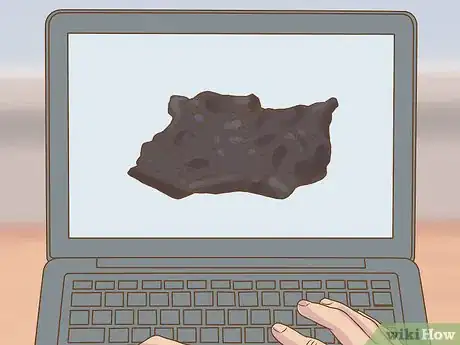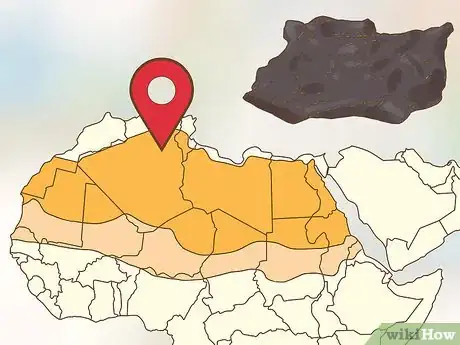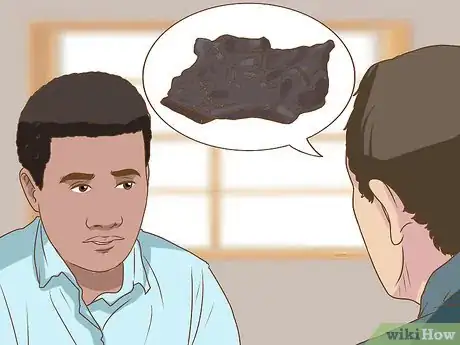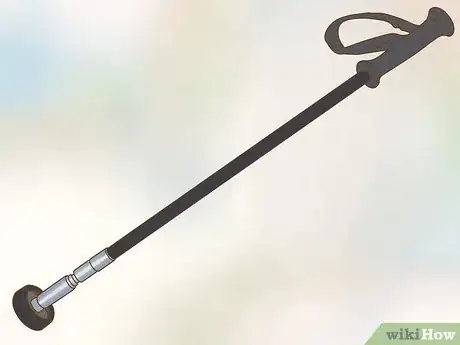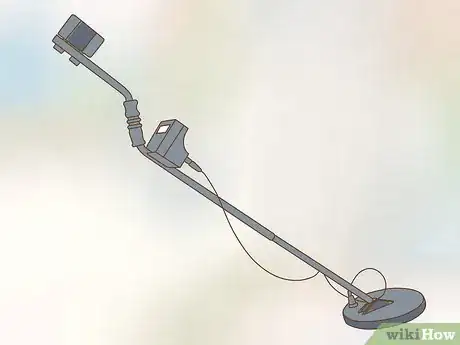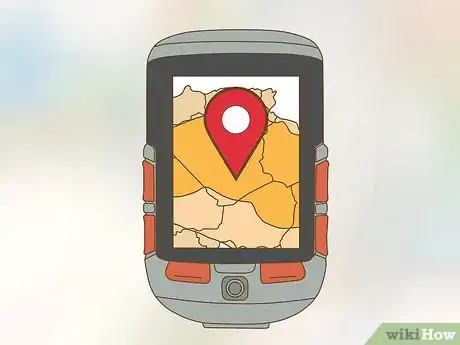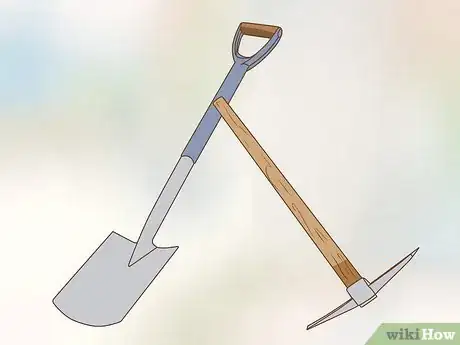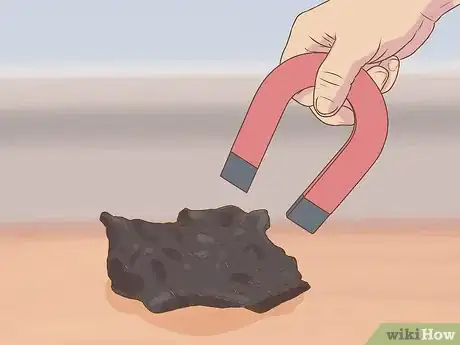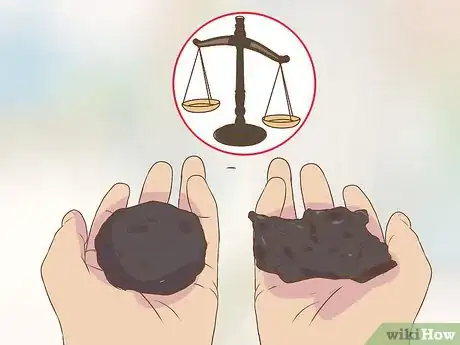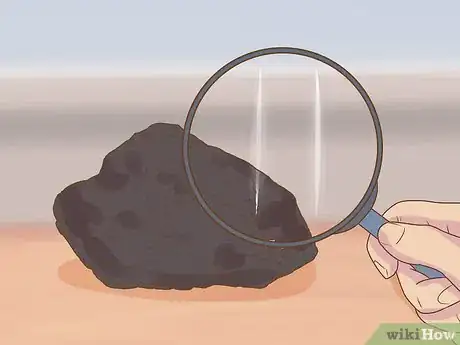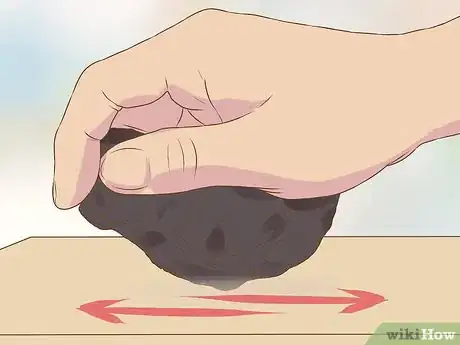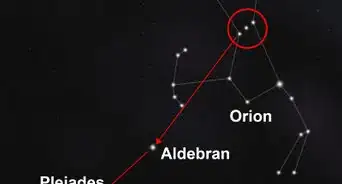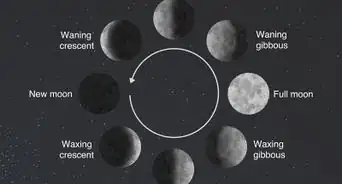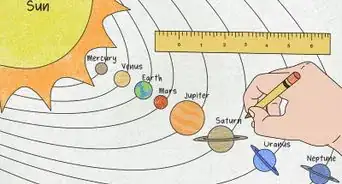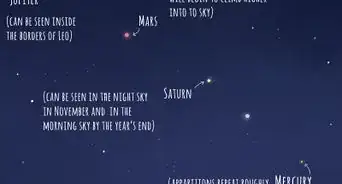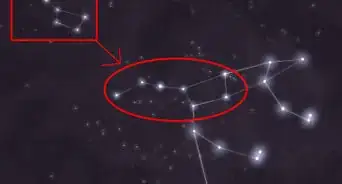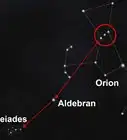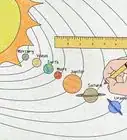This article was co-authored by Bess Ruff, MA. Bess Ruff is a Geography PhD student at Florida State University. She received her MA in Environmental Science and Management from the University of California, Santa Barbara in 2016. She has conducted survey work for marine spatial planning projects in the Caribbean and provided research support as a graduate fellow for the Sustainable Fisheries Group.
wikiHow marks an article as reader-approved once it receives enough positive feedback. In this case, 90% of readers who voted found the article helpful, earning it our reader-approved status.
This article has been viewed 110,571 times.
The solar system is full of meteors. These meteors fly around the solar system and sometimes collide into other celestial bodies, including the Earth. Some meteors burn up in the atmosphere and never make it to the surface of the Earth, but some do. Once a meteor lands on the Earth’s surface, it is classified as a meteorite. If you are interested in owning one of these space treasures, you can go out and find them. You just need to know where to look, how to pinpoint a meteorite, and how to tell them apart from other rocks.
Steps
Choosing a Location
-
1Look through a database. Scientists and meteorite enthusiasts keep up to date records of where they find meteorites. You can look online for databases, such as the Meteoritical Society’s database, that show the areas that produce the most meteorite discoveries. Pinpointing the nearest “hot spot” for meteorites is a great start to finding your own.
-
2Choose a warm, arid climate. Moisture and damp climates will deteriorate a meteorite relatively quickly. Your best shot at finding an intact meteorite is to look in a place that stays hot and dry. Deserts are one of the best climates to search. Dried up lake beds are great, too.[1]
- For example, more meteorites have been found in the Sahara than any other place on Earth.
Advertisement -
3Get permission to search the area. Before you take off scouring the Earth in search of meteorites, take a moment to think about who owns the land you are searching. If the land is owned privately, you will need the owner’s permission before searching it. Public lands follow different rules depending on the particular jurisdiction, but you always need permission to search any public lands.[2]
- If it is privately owned land, you need to ask the landowner for permission to be on the property.
- If the land is publicly owned (e.g. a park) you need permission from the governing body to search it, and permission to keep the meteorite if you find it. Some areas classify them as artifacts, meaning that they belong to the municipality rather than the discoverer.
Hunting a Meteorite
-
1Buy or make a meteorite stick. While the name might suggest something exotic, a meteorite stick is a simple stick with a magnet at the end of it. You can stick the end to rocks on the ground to test for magnetic properties. If a rock has magnetic properties, then there’s a chance that it could be a meteorite and warrants further investigation.
- Using a long stick will prevent you from continually bending over to see if individual rocks are magnetic.
-
2Get a good metal detector. You should get a metal detector that is made to search for gold. These are the most accurate metal detectors. Go to the location that you intend to search and run the coil of the metal detector along the ground to scan for meteorites underneath the surface.[3]
- Good, used metal detectors generally cost between $250 and $400. There is no need to buy a new one for a higher price.
- The metal detector is more sensitive than a meteorite stick, but less convenient to use. You should keep both with you.
-
3Bring a GPS. A GPS will serve you in two ways. First, it will help you keep track of your position in case you get lost. Second, it allows you to mark the location of any meteorites that you find.
- If you do find a meteorite, marking its location is important. This allows you to upload it to the meteorite databases and help map the location of meteorites.
-
4Be prepared to dig. Sometimes, you can find meteorites just lying on the ground. Other times, your metal detector will pick up a signal from something deep in the ground. Bring along a pickaxe and a spade to help you dig up any potential meteorites.
Identifying a Meteorite
-
1Test the rock for magnetic properties. Testing the rock for magnetic properties can be done rather quickly. Just hold a magnet near the rock to determine if there is any interaction. This can even be done with the magnet at the tip of your meteorite stick. Most meteorites have magnetic properties.
- Keep in mind that some terrestrial rocks also have magnetic properties.
-
2Observe the density of the rock. Because of their high iron and nickel content, meteorites are rather dense. They are often denser than most terrestrial rocks. This can be loosely translated to being heavier than other rocks their size. Pick up the rock and analyze how heavy it feels versus what you would expect a rock that size to feel like.
-
3Look for common meteorite traits. While not all meteorites share the same characteristics, there are some common traits that can be found in most of them. If you can identify one or more of these traits, there’s a good chance that you have a found a meteorite. Four specific traits to look for are:
- A metallic shine on the surface of the rock
- Small rounded pieces of stones on the surface (these are known as chondrules)
- A black or brown coating known as fusion crust (this is produced by the extreme heat of flying through the atmosphere)
- Small dents covering the surface of the rock (this is regmaglypt texture or thumbprints)
-
4Do a streak test. Try dragging the rock in question across a streak plate or a piece of paper. If it leaves a streak, it is probably a terrestrial rock. If it doesn’t leave a streak, or if the streak is weak and gray in color, it might be a meteorite.
- A streak plate is generally made of unglazed ceramic.[4] You can find them online or in rock/mineral testing kits.
Community Q&A
-
QuestionHow do I find an expert?
 Community AnswerYou can start by looking online for an expert near you. You could also reach out to a nearby college or university to find information on the nearest experts in the field.
Community AnswerYou can start by looking online for an expert near you. You could also reach out to a nearby college or university to find information on the nearest experts in the field. -
QuestionDo meteorites get buried after falling?
 Community AnswerSometimes the meteorite can get covered up by shifting dirt or sand. This often depends on how long ago the meteorite fell.
Community AnswerSometimes the meteorite can get covered up by shifting dirt or sand. This often depends on how long ago the meteorite fell. -
Questionif I find a meteorite, can I sell it?
 Community AnswerYou can, but you should have it appraised and certified by an expert before attempting to sell it to make sure you are selling a genuine meteorite.
Community AnswerYou can, but you should have it appraised and certified by an expert before attempting to sell it to make sure you are selling a genuine meteorite.
Warnings
- You can dehydrate quickly in arid climates. Bring appropriate amounts of water.⧼thumbs_response⧽
- Do not trespass to look for meteorites.⧼thumbs_response⧽
- Do not steal meteorites.⧼thumbs_response⧽
- Never go meteorite hunting alone.⧼thumbs_response⧽
Things You'll Need
- Long stick
- Magnets
- Metal detector
- Pick axe
- Streak plate
- GPS
References
About This Article
To find a meteorite, start by checking online databases, like the Meteoritical Society’s database, for locations that produce the most meteorites. Once you decide on a location, get permission to search it from the owner or the governing body. Additionally, make sure to purchase the proper equipment, including a meteorite stick, a metal detector, as well as a pickaxe and spade in case you need to dig. When you find what looks like a meteorite, check it for common meteorite traits such as a metallic shine and small rounded pieces of stone on the surface. For more advice from our Science reviewer, including how to identify meteorites by doing a streak test, keep reading.
